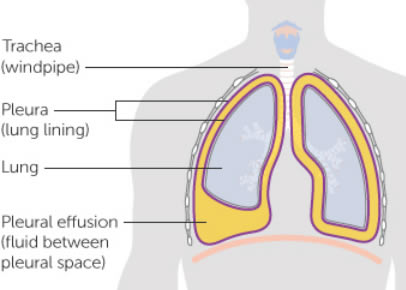Where Does Lung Cancer Usually Start and Come from?
… Continued …
Small cell lung cancer
About 10-15 percent of every 100 lung cancers are small cell type. As the name suggests the cancer cell of this type looks small under the microscope, even almost cell cancer is nucleus (the core, control center of cell).
It has several alternative names such as oat cell carcinoma, oat cell cancer, or small cell undifferentiated carcinoma.
Where does it usually start and come from? It is exclusively found in smokers. Non-smokers can have it, too – but very rare. It usually starts to grow in the bronchi close to the center of the chest (see the picture in the previous page)!
The metastasis of small cell type goes quite early. In other words, it is more likely to spread widely through the body or affect other parts of the body fairly early in the course of the disease. In fact, many patients with this type are diagnosed with late stages of the disease, the time of when the cancer is more difficult to treat.
If there are too many cancer cells that have spread throughout the body, surgery is usually not the option. For such case, chemotherapy and radiotherapy are the main treatment options.
Non-small cell lung cancer
About 80-90 percent of lung cancers are non-small cell type. This type can affect both non-smokers and smokers. And as noted before, it has several sub types (adenocarcinoma, large cell carcinoma, and squamous cell carcinoma).
Cancer cells in this group behave in the similar way and also have the similar treatment approaches, though they are different in shape, size, and the chemical contents when observed under the microscope!
Adenocarcinoma
It is the most common subtype of non-small cell type, which means it is also the most common type of lung cancer (both in smokers and non-smokers). It accounts about 40 percent of lung cancers, and most of patients are women. The bad news, it tends to affect younger adults if compared to other types.
The lungs have normal cells that make mucus, essential substance to help protect the lungs against foreign chemicals and other bad things. Adenocarcinoma usually starts to occur by altering these cells.
At early stages, it is often found in the outer parts of the lungs. The good news, it is more likely to grow slowly. Therefore many times, it can be found before it spreads to other areas of the body.
Large cell carcinoma
As the name suggests, it usually looks larger and rounded than other types at under a microscope. It accounts about 10-15 percent of lung cancer cases. There is no specific area where it is likely to occur for the first time because it can appear and grow in any area of the lungs.
It is more likely to grow quite quickly. Even large cell neuroendocrine carcinoma, a subtype of large cell carcinoma, can be a fast-growing cancer (as fast as small cell lung cancer).
Squamous cell cancer
It accounts about 25-30 percent of lung cancer cases. It comes from squamous cells, flat cells (surface covering cells in airways of the lungs).
It usually starts growing near the center of the lung, near one of bronchus (the main airways of the lungs). It is also quite common to be associated with smoking.
Other less common subtypes of non-small cell type
Sarcomatoid carcinoma and adenosquamous carcinoma also belong to non-small cell lung cancer. But these are much less common.
In addition, sometime the cancer cells are very-undeveloped. For such case, doctors usually call it ‘undifferentiated cells’. This term may also be used when it’s difficult to determine the kind of non-small cell type. But this usually will not affect the treatment since most types of non-small cell type are treated in the same way!
Lung carcinoid tumors
They only take about 5 percent of lung cancers and also have several subtypes. The treatment for them is also different than more common lung cancers.
Typical carcinoid tumor is the most common type of lung carcinoid tumors, as the name implies. Typically, it grows slowly and therefore often successfully treated with surgery.
Atypical carcinoid tumors are another subtype of lung carcinoid tumors. They are less common if compared to typical carcinoid tumors.
Mesothelioma
This kind of lung cancer is very rare. It is usually linked to excessive exposure to asbestos.
*Picture credit to Cancer Research UK
It often occurs in the pleura (the covering of the lung). It is different (very different) to other common types of lung cancers.
- http://www.cdc.gov/cancer/lung/basic_info/risk_factors.htm
- http://www.mayoclinic.org/diseases-conditions/lung-cancer/basics/risk-factors/con-20025531
- http://www.cancerresearchuk.org/about-cancer/type/lung-cancer/about/types-of-lung-cancer




